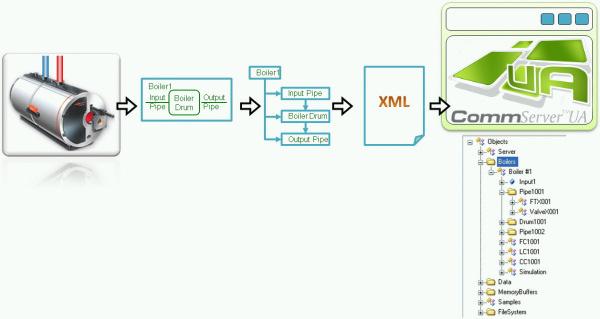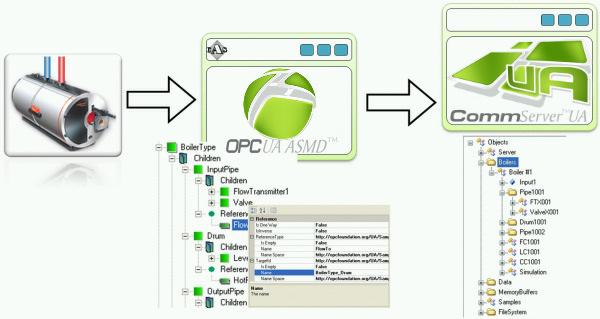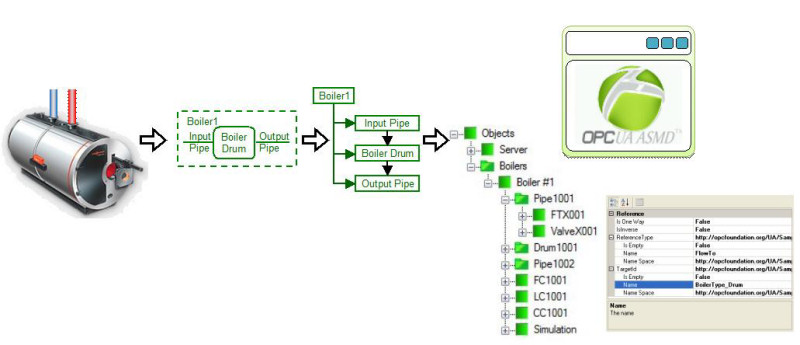Concept |
One of the biggest improvements in the OPC Unified Architecture is a powerful Address Space and Information Model. OPC UA allows for the presentation of a real-time process and underlying infrastructure as a consistent information model built up with nodes. The process model is represented by nodes, attributes and their mutual relationships. Therefore, this powerful concept allows us to present in UA not only raw process data, but also complete information about the process state and process environment. The flexibility of UA ensures that there is no existing or future system that is too complicated to be exposed via UA. But questions arise “How to model the process to make it available via UA? How to prepare a server address space based on the process?”

Of course, this is a multi-step process. Especially when we are working not only on the server configuration, but also developing the server software. Based on OPC UA specifications and recommendations from the OPC Foundation, the following steps have to be done:
Preparation of a logical model based on the real environment
Preparation of a model basing on the OPC UA notation
Preparation of an XML file that describes the model
Development of an OPC UA server

Let’s focus on the XML file and server development. The question is what is happening there.
Based on the model OPC Foundation's UA SDK, the SDK Model Compiler is generating the following files that are required for OPC UA server implementation:
Model implementation in C# language
XML and binary initialization files
XML and binary schemas
Read more about it in the topic: “How to build a solution”
Now an important question arises: "How to create the model in the XML file?" Of course writing such an XML document using one of the common XML editors is a very hard and error prone task, but CAS UA Address Space Model Designer seems to be a solution.
Let’s focus on the modeling task using OPC UA Address Space Model Designer.

OPC UA Address Space Model Designer allows us to perform the same modeling steps as recommended by the OPC Foundation. But the advantage is that all these steps can be done in a user friendly graphical interface.
The output could be:
Model in XML file
C# classes, schemas and other files required directly for server development

To see an example that shows how to start from a real process (it is a boiler in this example) and end with C#, XML and schema files, read the topic Boiler model.